One of the best networks to reach a large number of people is YouTube. As it is the 2nd largest social network with over 2 billion users who watch 1 billion hours of video every day.
90% of people discover new products and brands on YouTube (ThinkwithGoogle, 2019). Many businesses understand the importance of using YouTube in their marketing. This is why 62% of them post video content on the network (Buffer, 2019).
Posting organic content is an excellent way to generate engagement and sales on the network. But if you want to get the best results, you need to combine them with ads, especially retargeting ads, as they usually generate the highest ROI.
Therefore, to help you get started, I have listed the best YouTube retargeting strategies below…
Retarget video viewers
You can retarget people who watched your organic YouTube videos and video ads by creating a custom audience consisting of views. You can do something similar on networks such as Facebook and Instagram, but on YouTube, the audience is of better quality. As on Facebook, a viewing duration of 3 seconds is considered a view. While on YouTube, a viewing duration of 30 seconds or the entire length of the video (if the video is less than 30 seconds) is considered a view.
This is definitely advantageous, but it also has a drawback as you need to get a 30 second or a full video view to add someone to your custom audience. Also, there’s no option to create custom audiences based on the percentage of the video they viewed, as you can do on Facebook.
But they have a lot of different targeting options. You can target people by any video view on your channel or an individual video. You can also target them based on any ad view or a specific one.
For best results, target people who watched a specific video, as you can create relevant offers.
The best technique is to publish several organic videos that contain free educational or entertaining content related to the products you want to promote. After that, you can cherry-pick the best performing organic videos based on views, Likes/Dislikes, and comments and promote them with ads.
You can then retarget the viewers with ads that promote products.
This will help you achieve high conversion rates (especially if you are selling online courses or other products that cost more than $100) as the organic videos, and educational ad videos will help nurture and warm up your audience.
You can also use the data you gather from the views and engagement to create better ads and generate a higher ROAS.
A company that does this well is JustFab. They publish a wide range of organic, educative, and promotional video content on their channel. They suit viewers in every stage of the funnel.
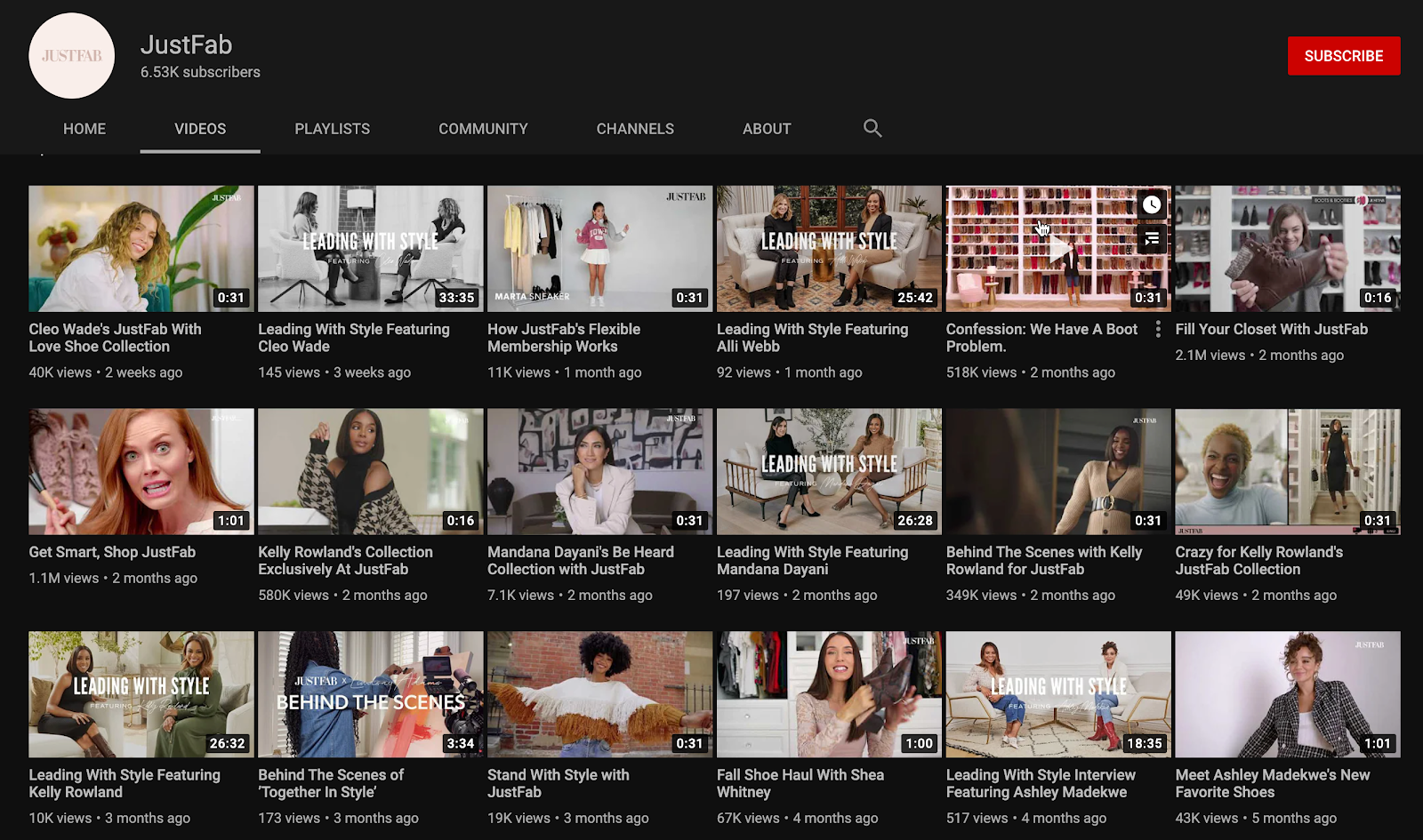
The videos also range in length from 16 seconds to 30+ minutes.
After nurturing the audience and understanding their interests, they retarget them with video ads like this one.
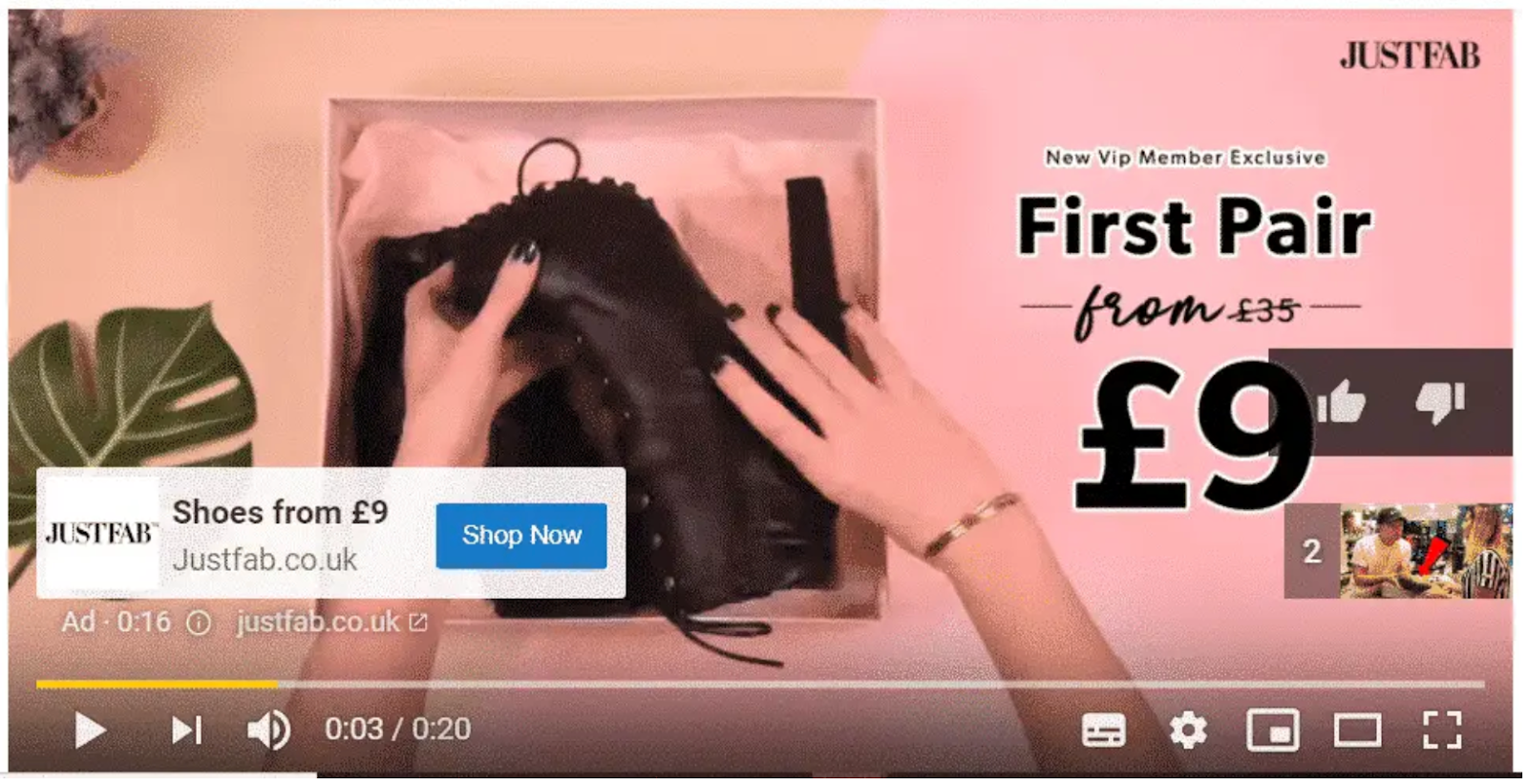
Creating all these videos can seem complicated, but it is easier these days as there are online video-making tools such as InVideo.
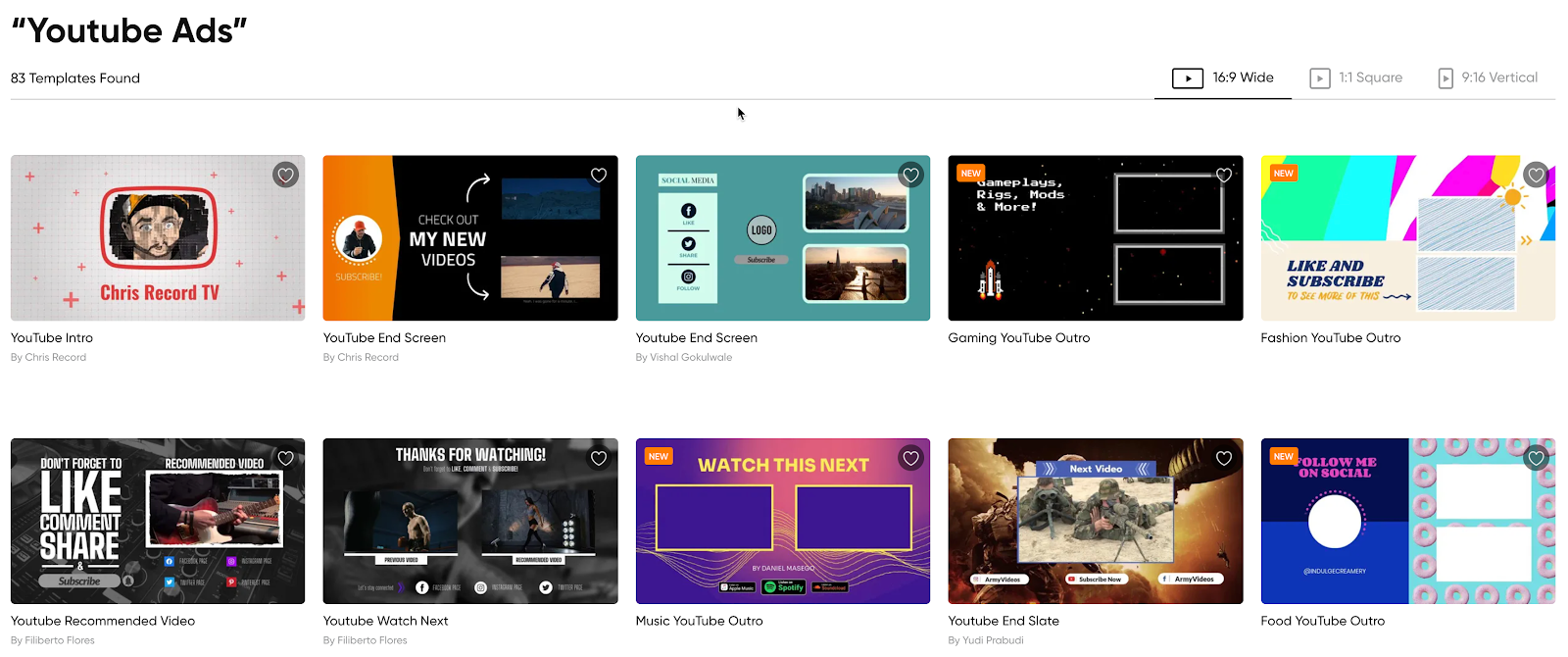
It comes with templates for both organic video content and ads. You can use the templates and video editor to quickly whip up professional-quality videos.
Retarget channel and video engagement
Views aren’t the only interaction; you can retarget on YouTube, there are other types of interactions. These include sharing a video on your channel, adding your video to a playlist, liking a video, leaving a comment, subscribing to a channel, or visiting the channel homepage.
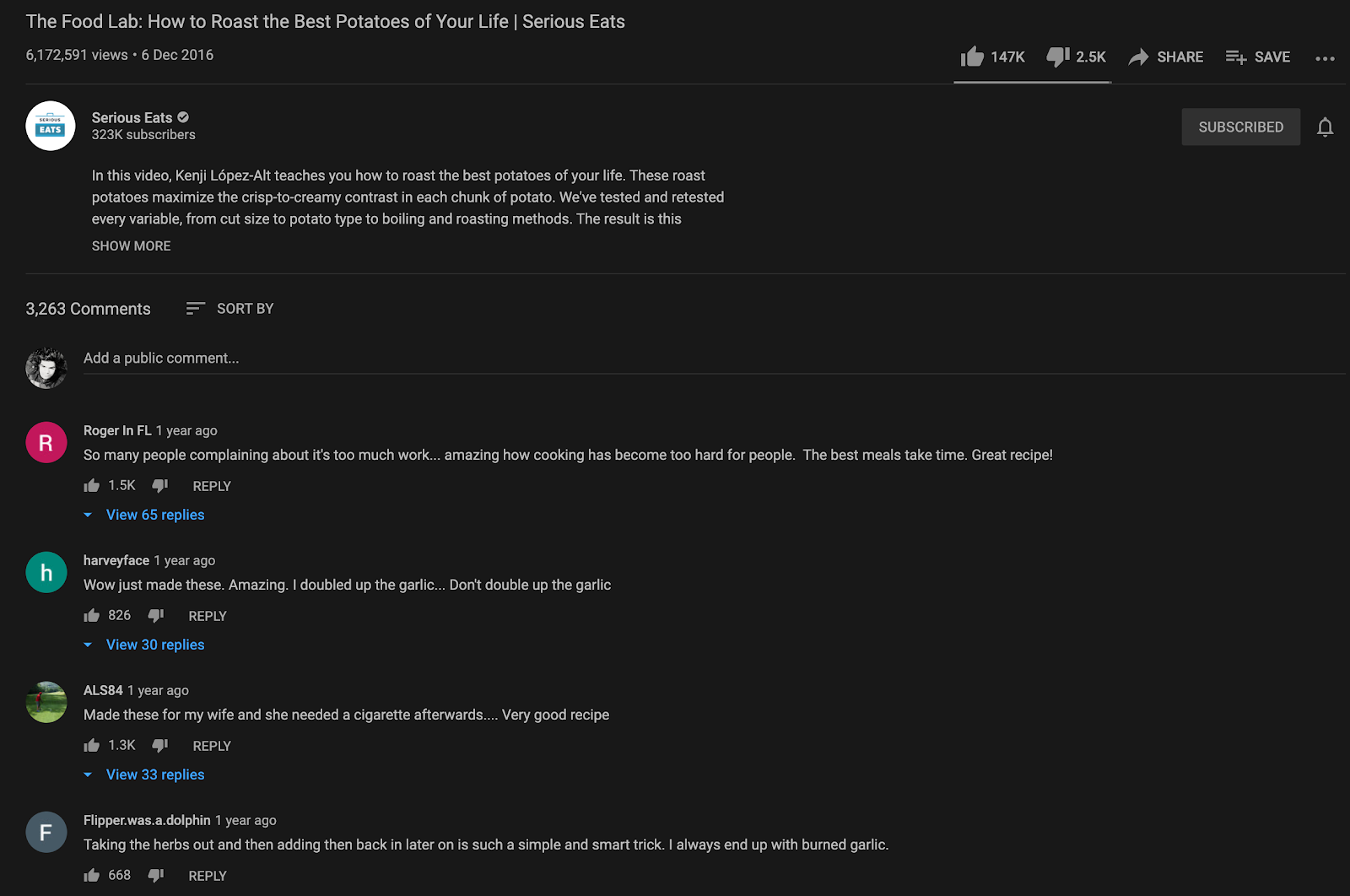
These types of interactions, especially sharing, liking, or commenting, can indicate substantial interest as a view is a basic interaction. People take these extra steps only if they like your content. You will see better results if you retarget them.
You can use these ads to not just promote products or lead magnets but also your channel. If people interact with your channel in any way other than a subscribe, you can retarget them with educational videos with a call to action asking them to subscribe to your channel.
A subscription might not lead to a direct sale, but it will cost you far less to gain a subscriber than an email sign-up or product sale. You can nurture this audience with free content and promote your products with promotional in-feed videos, stories, and posts.
Email subscribers
You can target email subscribers with YouTube ads. But there’s no direct integration between email service providers and YouTube like you have with Facebook. You will need to do it manually. Almost all email marketing service providers let you download a CSV version of your subscribers.
You can download this and upload it to Google’s AdWords. If you are already retargeting email subscribers with AdWords, you can target the same audience with YouTube.
While using this method, try to create different audiences consisting of different types of subscribers. For example, one audience can consist of buyers who bought one product, another could be people who ordered again, and another could be people who signed up for a lead magnet but didn’t purchase.
This will help you create different ads for different audiences and generate a higher ROAS.
Here’s an example of an ad from Curiosity Stream that I came across recently. I used to be a customer but deactivated my account.
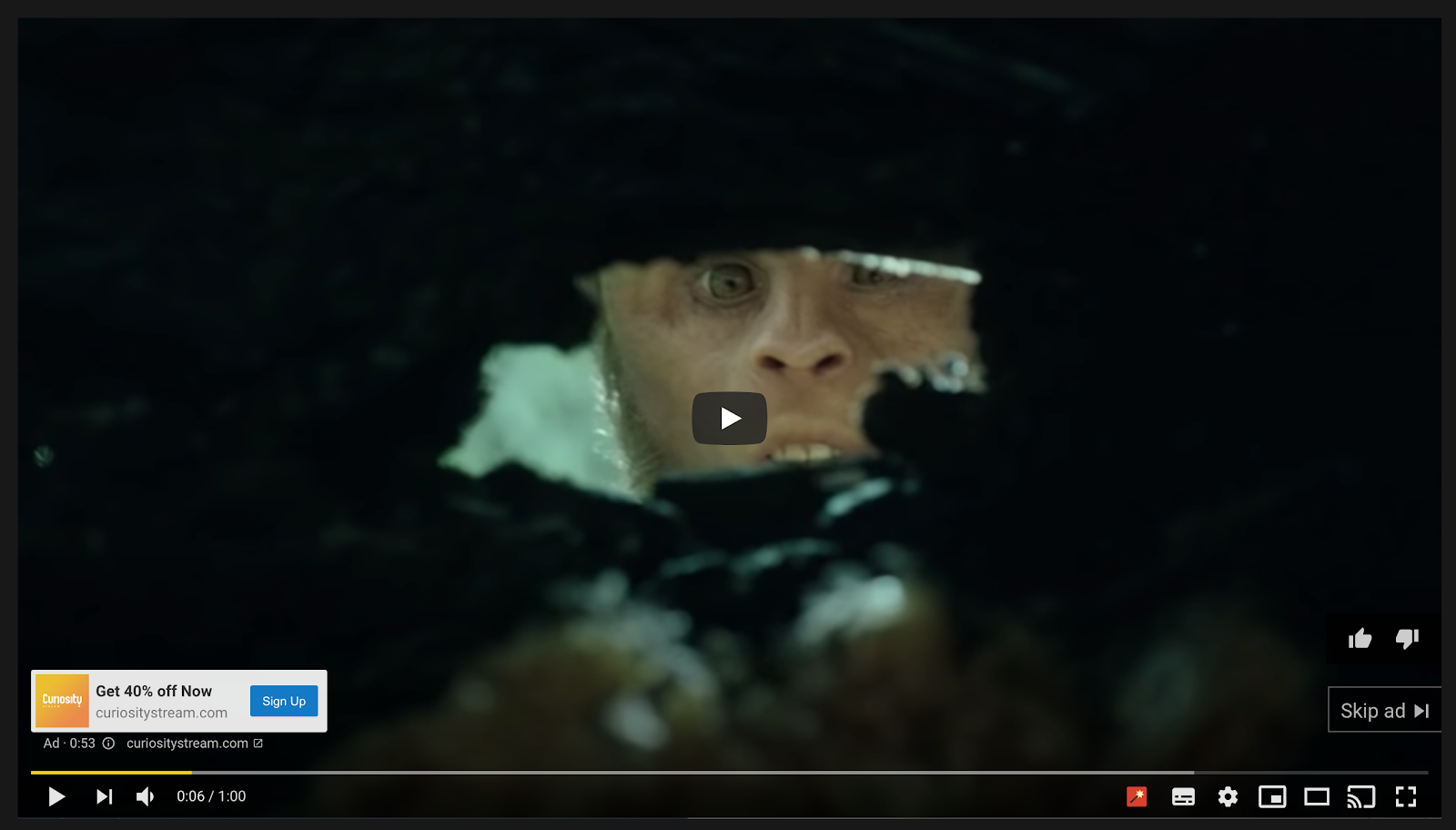
So, they are serving me with ads promoting discounts to get me back.
Website visitors and mobile app users
If you add the Adwords pixel to your website and mobile app, you can retarget people who visit your website or use your app. Here again, you should create different ads for people who visit different pages and blog posts.
For example, if someone adds products to their cart but doesn’t follow through on the purchase, you can retarget them with ads that ask them to finish the purchase. You can also give them a discount code.
4 tips for getting YouTube remarketing right
Now that you know about the best YouTube remarketing ads you can create, here are a few tips to help you get better results.
Limit the retargeting frequency:
In remarketing, you need to get the frequency right. Otherwise, it will end up costing you more as you pay per view on YouTube. Also, displaying the same ad several times to the same person can be annoying.
This is why you must set the optimal frequency to get the highest ROAS. It’s best to start with three impressions (views) per day for 30 days and then slowly reduce the number of days if necessary. Your frequency will depend on the product you are selling. Some products require more time consideration before purchase, while others need a swift decision.
Create both in-stream and in-display ads:
In-stream ads aren’t the only option for YouTube videos. You can also create in-display ads that appear in the top right corner, like the one below.
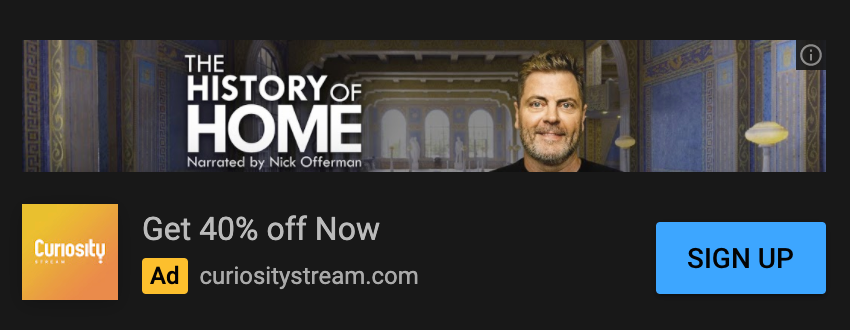
Another type of ad you can create is the overlay ad that appears on the video itself.
Create more skippable ads when starting out:
You can create non-skippable ads on YouTube, but when starting, you should create skippable ads. As this will help you gather better data on your video quality. If more people are skipping your videos, it indicates something is wrong, and you can make changes to ensure more people view it.
Once you have an ad that works, you can scale results by running non-skippable ads, but remember that they cost more.
Check view percentage:
Another way to check the quality of your ad video is by analyzing the view percentage. YouTube lets you see the percentage of people who viewed 25%, 50%, 75%, or the whole video.
If you find that the view percentage is low, you can either create new versions of your ad or experiment with moving the call to action early. This can help you get higher conversions.
Which YouTube Remarketing Strategy do You Want to Use Most?
These are the different YouTube remarketing strategies you can use to get the best ROAS. They will work whether you want to generate sales or get more views or subscribers. If you want to take this to the next level, you should combine it with Google Ads remarketing. You can retarget people you are already engaging with other Google ads with YouTube ads and the other way too.


